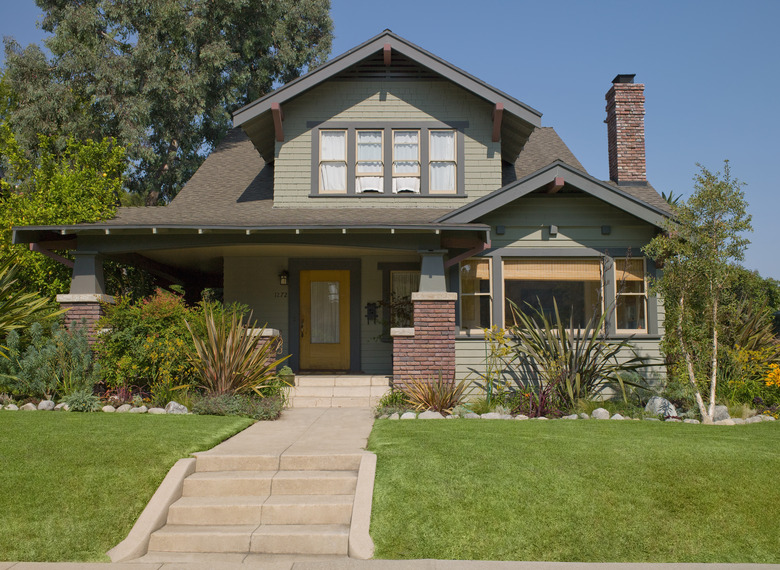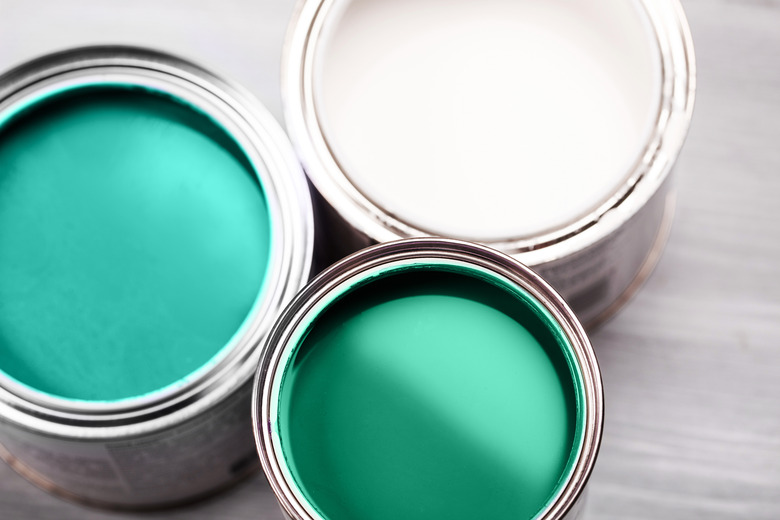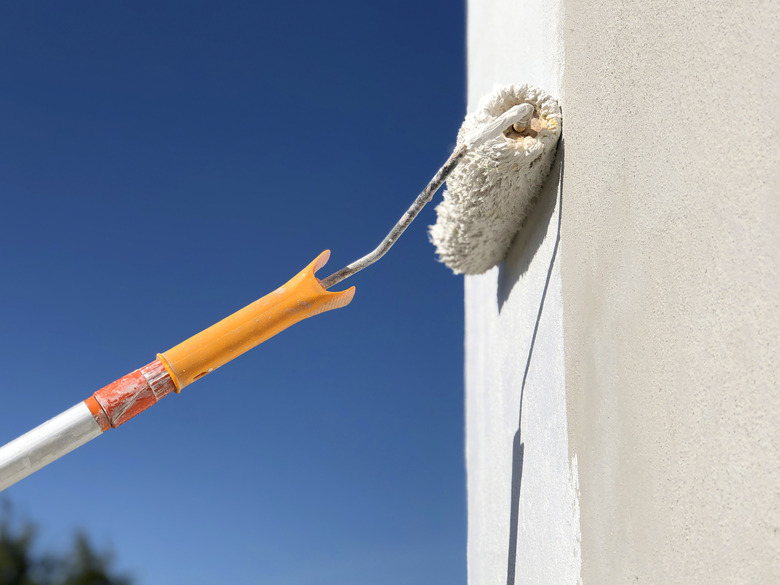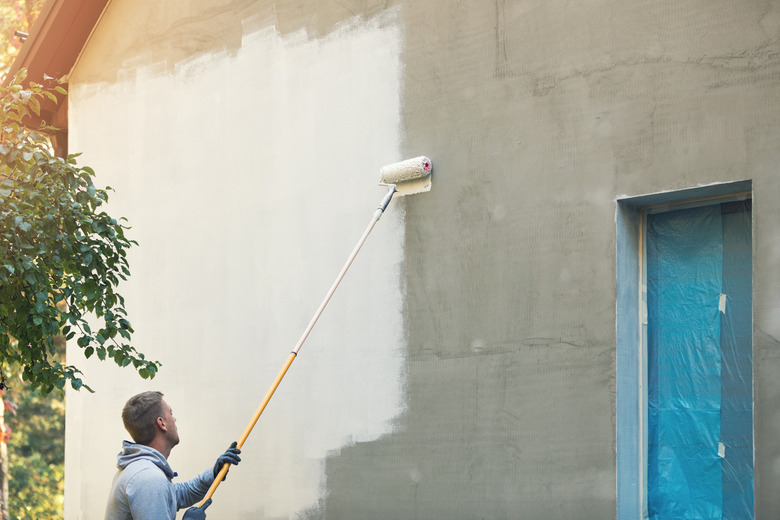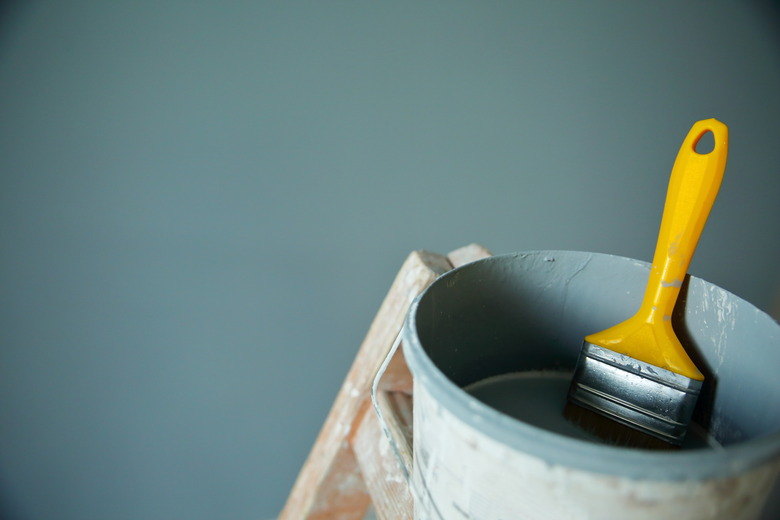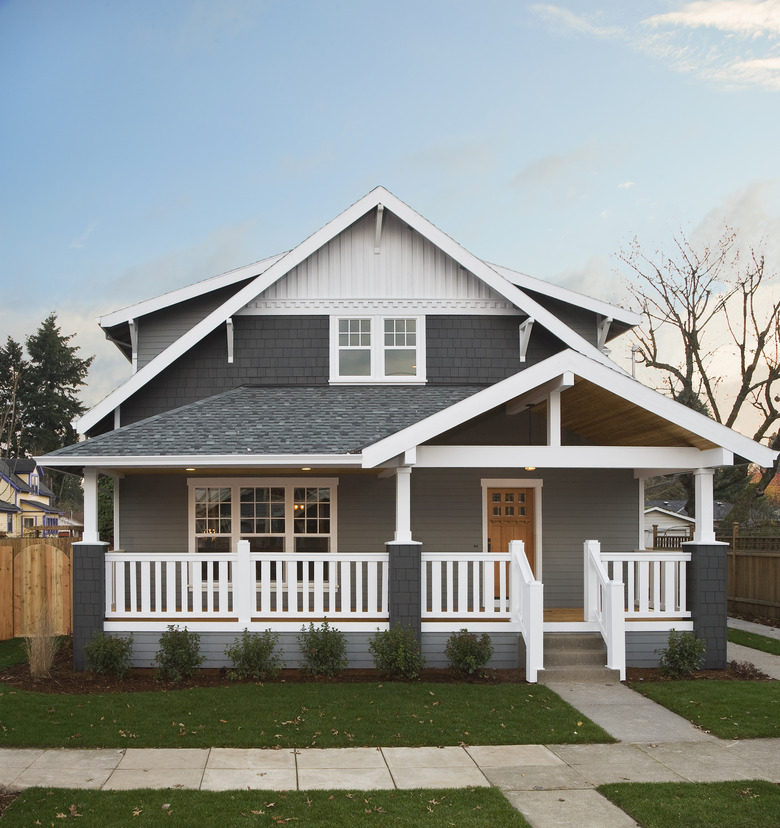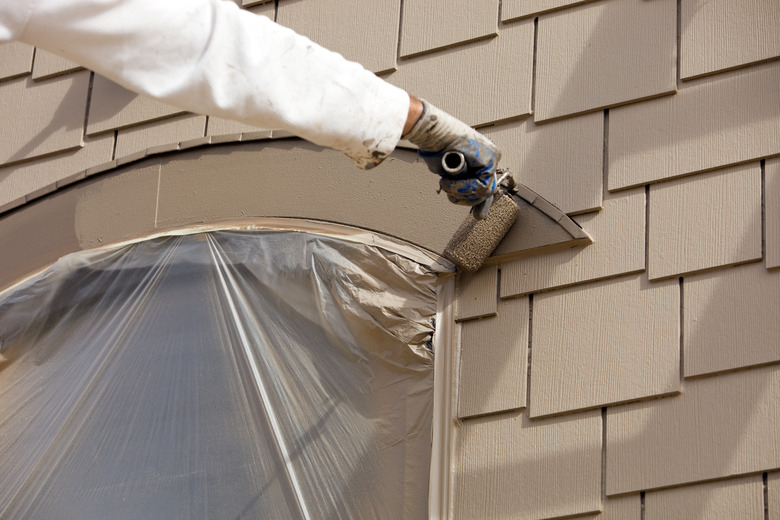How To Pick The Best House Paint
There is nothing like a fresh coat of exterior paint to give your house a big boost in curb appeal, and the fresh look can work wonders for the way you feel about your home. But when you're about to select your house paint, it can feel a bit overwhelming: There are hundreds of different paints out there, and the quality runs from barely acceptable to almost indestructible.
Choosing an exterior paint for your home means considering how well the paint retains its color, its overall durability, how easy it is to work with, and the cost, among other factors. To make a decision on paint, it's helpful to know what goes into a can of paint and what qualities best suit the exterior of your home.
Types of Exterior Paint
Types of Exterior Paint
The paint world is divided into a number of categories. For example, some paints are formulated for interior surfaces and others for exterior surfaces. Unlike interior paint, exterior paint contains additives that resist ultraviolet radiation from the sun and can stand up to moisture and extreme temperature fluctuations. There are paints labeled "indoor/outdoor," but for the best exterior paint job, stick with an exterior paint.
Paints are also grouped by the solvent contained in the paint: either oil-based or water-based. Water-based paint also goes by the names of latex, acrylic, and latex-acrylic, and they are by far the most popular types of house paint. When dry, they are semipermeable, meaning they let water vapor pass through them so moisture from the inside can escape to the outside easily. They are flexible and dry quickly, and they don't give off much of an odor as they dry.
High-quality acrylic paints can be used on:
Oil-based paints are not used as often on the exteriors of homes. They contain resins called alkyds, which are extremely durable and are self-leveling, meaning they dry to a smooth surface. But oil-based paints release relatively high levels of VOCs (or volatile organic compounds) as they dry. VOCs are noxious and cause pollution, and paints are heavily regulated on the amount of VOCs they can contain.
What’s in Exterior Paint?
What's in Exterior Paint?
A can of paint contains several ingredients that give the paint its color, keep it liquid while in the can, and let it form a film when it dries.
- Pigments provide the paint color. The pigments can be natural or man-made. High levels of pigment, meaning very intense color, help the paint cover imperfections on the surface.
- Binders are the resins that form the paint film when it dries. The binders determine how shiny or dull the paint is when dry. A high level of binder by volume means a shinier finish. The volumes of binder and pigments are related to one another. As the volume of one goes up, the other goes down.
- Solvents, also called vehicles, keep everything in a liquid state while in the can. This is where the oil-based and water-based designations come in. Oil-based paints use alkyds as the solvent. Water-based paints suspend plastic polymers in water. When the solvents evaporate during application, they allow the binder to form the paint film.
- Additives help make one paint different from another. They determine how long the paint takes to dry, its resistance to mold and mildew, and the like.
Choosing Exterior Paint
Choosing Exterior Paint
For most people, acrylic paints are the exterior paint of choice. The top-of-the-line paints of most manufacturers are those that are 100 percent acrylic, but there is some variation in how the paints are formulated and the results they produce. The differences lie in the thickness of the paint film when dry, the percentage of the pigment and resins in the dry paint, and the estimated coverage per gallon. Look for this information on the paint can or in the manufacturer's specification sheet.
The thickness of the paint film, measured in mils, affects the overall coverage. Thick films of more than 2 mils means less coverage per gallon of exterior paint but also a more durable coating. When coverage is listed below 350 square feet per gallon, the film thickness will be relatively thick, providing greater durability than you'd get with a thinner paint.
The pigment and resins are collectively called the solids, and this describes what's left of the paint after the solvent (oil/alkyd or water) goes away. In general, a higher percentage of solids (measured by volume) means better color coverage and higher durability. A good-quality paint has a solids percentage in the mid 30s; a top-shelf paint is in the mid-40s or higher.
Exterior Paint Costs
Exterior Paint Costs
Better-quality paints come at a price, but thankfully most manufacturers offer a tiered list of products. What they may call "value paints" cost less than the others, but they are not as good in terms of workability and durability, and they won't last as long as the top-of-the-line products. Prices for exterior paints range from $25 to $120 per gallon, excellent mid-range paints fall in the $55 to $75 price range, and you can expect to pay $15 to $55 per gallon for primer.
The standard advice is to buy the best paint you can afford. Think of it this way: If you are having a professional painter paint your house, they will give you a quote for what the job will cost. About 70 to 80 percent of that quote consists of labor charges, and the rest is materials. The actual paint costs are very low compared to everything else.
Exterior Paint Finish
Exterior Paint Finish
In addition to choosing a color or colors for your exterior paint job, you will need to decide on the finish or sheen level you want in your paint. The standard options are flat, eggshell, satin, semigloss, and high gloss.
The gloss level is determined by the amount of light the finish reflects. Most homeowners will opt for one low-shine gloss for the body of the house and a shiner sheen for the trim. Introducing a second shiny gloss accent color is also popular.
- Flat finish: At one end of the spectrum are flat paints. These are not shiny at all, but they do a good job of hiding imperfections in the surface because they contain a high volume of pigment. They are usually used on the main areas of siding or the body of the house, but they are difficult to keep clean, and many people don't like the dull look.
- Eggshell finish: This finish is a level up
from flat paints in terms of glossiness. These also do a good job of hiding surface imperfections. For many, it is the go-to sheen for the body of the house. - Satin finish: This is a somewhat shiny paint that is relatively easy to keep clean. It is often used on trim work, such as soffits, eaves, and overhangs. Some people use it on window and door frames when they want a tough finish that is not too shiny.
- Semigloss finish: This shiny finish is the most popular for all types of trim. It's attractive, durable, and easy to clean, but dings or dents in the trim will show through the finished job.
- High-gloss finish: This is the shiniest and the most durable sheen, but it will show the most imperfections. High-gloss paints are used sparingly because of the show-through, and they are the most difficult to apply correctly to get a smooth, even finish because mistakes will be readily apparent. They are usually confined to the front door to make a dramatic statement.
How to Prep and Prime Exterior Paint
How to Prep and Prime Exterior Paint
Selecting the right exterior paint for your home is only part of the process. Whether you are doing the job yourself or hiring professional painters, the surface has to be prepared properly, and the paint must be applied correctly. The best environmental conditions to get a good job are listed on the can. Ideally, you want to work in 50- to 90-degree-Fahrenheit temperatures when the relative humidity is between 40 and 50 percent, although there are paints formulated to work outside those parameters.
Many painting projects require the use of a primer. A primer's job is to seal the surface, which often means hiding stains and providing something for the finish coat of paint to grab onto.
If you are painting over a flat, sound, clean surface, you can usually start applying your paint without priming, but if you plan on covering a dark color with a lighter one, it is a good idea to prime the surface first to prevent the old color from showing through the new one.
As with paints, primers are available in both oil-based and water-based formulations. In general, oil-based primers are better at hiding stains than water-based ones but check the product labels for specific performance characteristics.
Oil-based primers have the same limitations as oil-based paints: They give off higher levels of VOCs (although manufacturers have worked to reduce them), they are slow to dry (most need at least 24 hours), and you must use mineral spirits for cleanup. But their stain-hiding ability and self-leveling characteristics make them a favorite of many pros. You can apply an acrylic topcoat over an oil-based primer.
Unlike paints, most primers can be used both indoors and outdoors because the finish paint provides the necessary protection for the primer. There are all-purpose primers and those formulated for specific surfaces, such as masonry, as well as thick primers that can be applied over peeling paint. So, you can match your surface and painting conditions to pick the right primer.
There are a number of products that combine primer and paint in one. Even these products require a sound, clean surface for a successful job, and you will still need two coats in all likelihood. Another option is to ask your paint dealer to tint the primer with a color close to your topcoat. This will help ensure even coverage.
